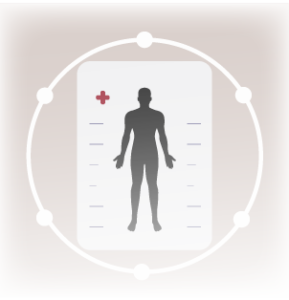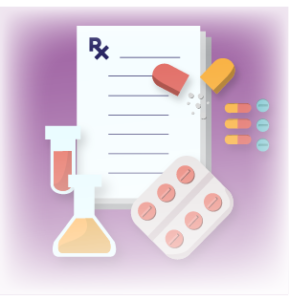Top tips:
- Anxiety is common and often underdiagnosed
- Validated tools should be used to differentiate anxiety from somatic symptoms
- In mild to moderate anxiety, lifestyle modification and psychotherapy may be sufficient
- Urgent assessment and treatment are needed in patients presenting with suicidality or function loss
- There is limited research on the use of pharmacological therapy for anxiety in cirrhosis; consider appropriate dose adjustments

Anxiety is common and may be pre-morbid, or occur secondary to physiological and psychological changes associated with cirrhosis. Overlapping somatic symptoms (fatigue, insomnia, impaired concentration, irritability) can complicate the diagnosis of anxiety.
Questionnaires are helpful to screen for “at risk” individuals but the diagnosis of anxiety requires a clinical interview
There are a range of screening tools that can be used. The GAD-7 (Generalized Anxiety Disorder) is advantageous because it emphasizes non-somatic symptoms, but other tools such as the HAM-A (Hamilton Anxiety Rating) Scale and Beck Anxiety Inventory can also be used.
Screening tool which emphasizes non-somatic symptoms
More urgent assessment and possible admission are warranted if patients present with acute suicidality and/or severe functional impairment
- Biological: Encephalopathy, uremia, pain, dyspnea, ascites, poor nutrition, impaired sleep, substance use history, medication side effects and medical co-morbidities
- Psychological: Difficulties coping with chronic disease, inability to engage in prior activities, limited coping skills, past trauma and psychiatric co-morbidities
- Social: Loss of employment, financial stressors, housing insecurity, change in social role (e.g. informal caregiving) or work, change in or loss of romantic and interpersonal relationships, social isolation, cultural factors
Consider non-pharmacological management in all patients with mild anxiety.
These therapeutic techniques can be learned using online resources (apps) or text resources in situations where access to a therapist is difficult.
- Eating a healthy diet: Nutrition Therapy
- Exercising: Exercise therapy
- Reducing stress: Stress Release
Cognitive Behavioral Therapy (CBT) and Mindfulness Based Stress Reduction (MBSR) are both effective for the management of anxiety in chronic illness.
If non-pharmacological therapy alone fails, consider adding pharmacological therapy, especially in cases of moderate to severe anxiety. There is limited evidence to guide the use of specific medications in cirrhosis.
Benzodiazepines:
- Typically used for severe anxiety symptoms or panic attacks. Avoid sudden benzodiazepine discontinuation in those patients on chronic benzodiazepines
- May be used as bridge to long-term anxiety medication/treatment in selected patients
- Should ONLY be used short-term (e.g. <2 weeks) to avoid dependence and tolerance
- Caution: The use of opioids + benzodiazepines may increase the risk of falls/delirium
- Caution: Be very cautious about starting benzodiazepines if there is a history of substance use disorder.
- If needed, preferred benzodiazepines to use in liver disease have a short duration in action and are the least likely to cause toxicity = mnemonic ALOT (alprazolam, lorazepam, oxazepam and temazepam)
- AVOID clonazepam
Selection of an antidepressant should take into account potential interactions with other medications the patient is prescribed.
- SSRIs and SNRIs need dose adjustment of 50% given impaired hepatic metabolism
- SSRIs may also increase the risk of bleeding, especially if on an antiplatelet agent
- Desvenlafaxine is the only antidepressant that does not undergo significant metabolism by the liver
Selection of an antidepressant should take into account potential interactions with other medications the patient is prescribed.
| Medication: | Recommended Dose | Additional information |
|---|---|---|
| Well-tolerated | ||
|
Citalopram (SSRI)(immediate release) |
10 mg PO daily |
GI bleed risk, can lower seizure threshold, risk of QT prolongation, caution with eGFR <20 mL/min. |
|
Mirtazapine |
15 mg PO nightly |
Caution with eGFR <30 mL/min (start with 7.5-15 mg, and titrate with close monitoring. |
|
Escitalopram (SSRI) |
5 mg PO daily |
GI bleed risk, can lower seizure threshold, risk of QT prolongation, caution with eGFR <20 mL/min. |
| Sleep disturbance | ||
|
Sertraline (SSRI) |
25 mg PO daily |
GI bleed risk. |
|
Mirtazapine |
15 mg PO nightly |
Caution with eGFR <30 mL/min (start with 7.5-15 mg, and titrate with close monitoring. |
| Fatigue/Low energy | ||
|
Fluoxetine (SSRI) |
10 mg PO daily |
GI bleed risk. |
|
Venlafaxine (SNRI) |
37.5 mg PO nightly |
GI bleed risk, nausea. |
|
Desvenlafaxine (SNRI) |
50 mg PO daily |
GI bleed risk, nausea. |
| Low Appetite/Nausea | ||
|
Mirtazapine |
15 mg PO nightly |
Caution with eGFR <30 mL/min (start with 7.5-15 mg, and titrate with close monitoring. |
| Co-morbid Neuropathic Pain | ||
|
Venlafaxine (SNRI) |
37.5 mg PO nightly |
GI bleed risk, nausea. |
|
Desvenlafaxine (SNRI) |
50 mg PO daily |
GI bleed risk, nausea. |
Once initiated, treatment should be re-assessed at 2 weeks using validated questionnaires (e.g. GAD-7) to evaluate response.
- If there is improvement at two weeks, consider increasing the dose to further target symptoms
- If there is no improvement or significant side effects at follow-up, the likelihood of symptom remission is low. An alternate medication trial should be considered
- A full trial of an antidepressant (used for anxiety) occurs when the maximum allowable dose is used for 8 weeks.
- Lack of response to an adequate trial of TWO anti-depressants (used for anxiety)
- Severe symptoms or functional impairment
This section was adapted from content using the following evidence based resources in combination with expert consensus. The presented information is not intended to replace the independent medical or professional judgment of physicians or other health care providers in the context of individual clinical circumstances to determine a patient’s care.
Authors (Alphabetical): Amanda Brisebois, Sarah Burton-Macleod, Ingrid DeKock , Martin Labrie, Noush Mirhosseini, Nicholas Mitchell, Mino Mitri, Kinjal Patel, Aynharan Sinnarajah, Puneeta Tandon, Sarah Tymchuk
Thank you to pharmacists Omer Ghutmy and Meghan Mior for their help with reviewing these pages.
Helpful Links:
- Self-test for anxiety (GAD-7): https://myhealth.alberta.ca/health/pages/conditions.aspx?Hwid=abn2339
- Alberta Health Services Self-Help tips: https://www.albertahealthservices.ca/news/page13125.aspx
References:
- Davison SN on behalf of the Kidney Supportive Care Research Group. Conservative Kidney Management Pathway; Available from: https//:www.CKMcare.com.
- Medication prescribing in liver dysfunction. Ment Health Clin [Internet]. 2014;4(3):131-7, doi: https://doi.org/10.9740/mhc.n197913
- Mullish BH, Kabir MS, Thursz MR, Dhar A. Review article: depression and the use of antidepressants in patients with chronic liver disease or liver transplantation. Aliment Pharmacol Ther. 2014 Oct;40(8):880-92. doi: 10.1111/apt.12925. Epub 2014 Sep 1. PMID: 25175904.
- Telles-Correia D, Barbosa A, Cortez-Pinto H, Campos C, Rocha NB, Machado S. Psychotropic drugs and liver disease: A critical review of pharmacokinetics and liver toxicity. World J Gastrointest Pharmacol Ther. 2017 Feb 6;8(1):26-38. doi: 10.4292/wjgpt.v8.i1.26. PMID: 28217372; PMCID: PMC5292604.
- Wilcock A, Charlesworth S, Prentice W, Selby P, McKenna M, Cripps S, Considine A, Orr A, Wright M, Mihalyo M, Oxberry S. Prescribing in Chronic Severe Hepatic Impairment. J Pain Symptom Manage. 2019 Sep;58(3):515-537. doi: 10.1016/j.jpainsymman.2019.04.034. Epub 2019 May 9. PMID: 31077785.






